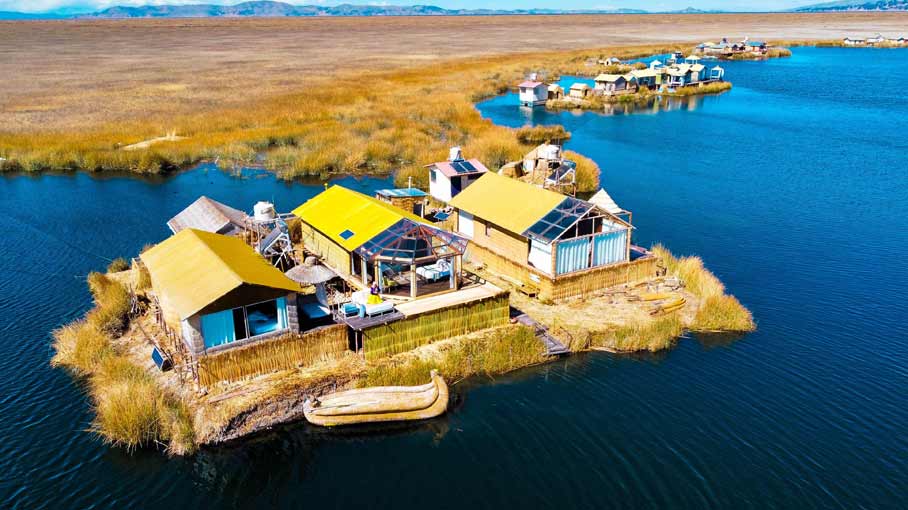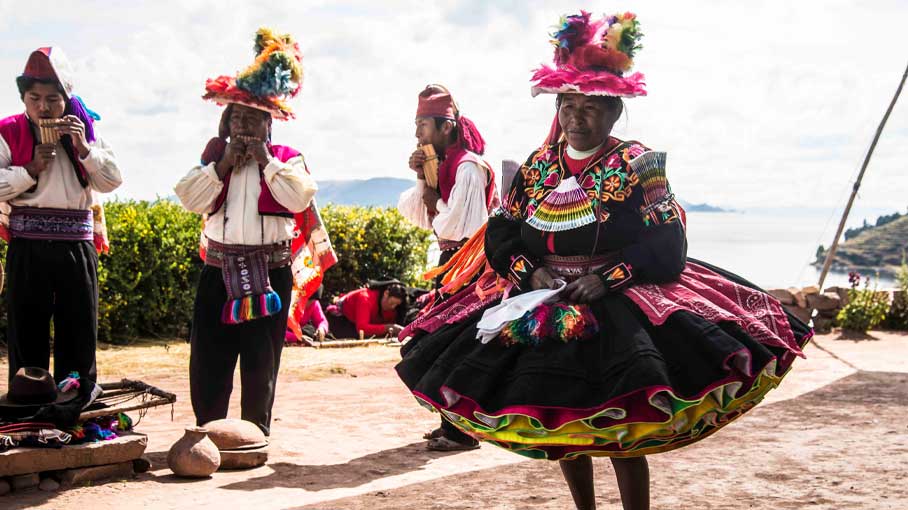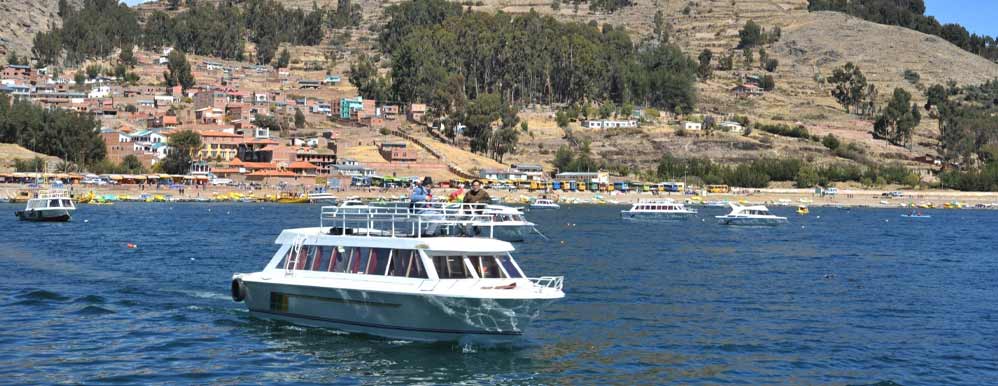Where is Lake Titicaca?
At 3,800 meters (12,465 feet) above sea level, Lake Titicaca is the world’s highest navigable body of water. It’s also the largest lake in South America, with a surface area of 8,372km². Its location is somewhat peculiar – it lies astride the border of Peru (to the west) and Bolivia (to the east).
For this reason, Lake Titicaca can be easily accessed from two countries. The most popular entry point from the Peruvian side is Puno. At the same time, Copacabana is a convenient choice when traveling in Bolivia.


History of Lake Titicaca
What was once a gap left over by an earthquake 50 million years ago became a large body of water due to melting glaciers and constant rainfall around the area. This new lake allowed life to flourish, and as time went on, ancient cultures began calling Lake Titicaca their home. The most notable was the pre-Inca Tiwanaku culture. They thrived from 500 to 1100 AD, where they built temples and monuments to worship gods linked to the sun, moon, and water. Many of the sites still stand today!
As the years went by, the Inca empire began taking control of the region. They believed that their first rulers rose from the depths of the water to form the mighty empire (more on that below).
However, the lake’s significance didn’t end with the Incas. Despite the Spanish colonization, the surrounding communities preserved their traditions as much as possible. Much of this can still be experienced today through their languages, customs, and traditions.
Legends & myths
Lake Titicaca is filled with history, legends, and uncovered mysteries. According to Incan mythology, it’s the birthplace of the first Inca king, Manco Capac.
Another myth says that the creator god emerged from Lake Titicaca before creating the Sun, Moon, and stars. Hence, the romantic nickname is ‘the birthplace of the Sun’.
The mysterious lake has also received its version of the Atlantis legend – rumor has it that there is a lost city under the face of the water. Well… this one proved to be more than just an old wives’ tale when the researchers found underwater ruins of an ancient temple at the bottom of the lake.
So, who knows how many other secrets are still waiting to be uncovered?

